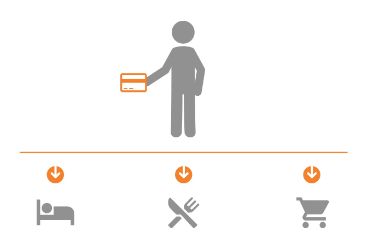Uniform financing of inpatient and outpatient services
14 November 2024 | Comment(s) |
Benoît Michellod

The Swiss healthcare system is known for its quality and efficiency. However, it is facing growing challenges in terms of cost and efficiency. In this regard, the Swiss people will shortly be asked to vote on a draft reform of the law on health insurance (LAMal/KVG) aimed at standardising the funding of services covered by the compulsory health insurance (AOS/OKP). The aim is to introduce uniform funding for inpatient and outpatient services covered by basic health insurance.
Inpatient and outpatient: what are the differences?
Imagine two neighbours, Freddy and Sherkan, who both need to undergo the same minor operation. Freddy undergoes his operation as an outpatient. He arrives at the hospital on the morning of the operation and goes home the same evening. Post-operative care includes home visits by a nurse. His neighbour, Sherkan, was admitted to hospital for his operation. He spent two days there, receiving post-operative care and continuous medical monitoring.
Under the current system, the costs of Freddy's and Sherkan's operations are financed differently. In principle, Freddy's outpatient treatment is less costly, and the entire cost is covered by the AOS/OKP (after deduction of its contribution to costs). Hospital treatment, on the other hand, is financed jointly by the cantons (around 55%) and the AOS/OKP (around 45%), also after deduction of the insured person's contribution to costs.
This system has a number of drawbacks. As more and more procedures can be carried out on an outpatient basis, cantons are gradually withdrawing from funding, to the detriment of premium payers. Differentiated funding also leads to inefficiencies and distorted incentives. For example, some treatments may be carried out in an inpatient setting simply because of the differences in funding, even though outpatient care would be more appropriate and less costly.
EFAS: fairness and logic in cost allocation

The main objective of this reform is therefore to create a more coherent and equitable funding system. By harmonising the funding of inpatient and outpatient services, it will be possible to reduce the incentive to hospitalise patients unnecessarily and promote care that is better adapted to their needs. This also means that:
1. Cost transparency: Freddy and Sherkan's care costs would be more easily comparable, allowing patients and providers to make more informed decisions.
2. Fairness: Patients like Freddy and Sherkan would have access to the care best suited to their needs, without the funding method representing a bad incentive and favouring one type of treatment over another.
Therefore, the introduction of uniform funding for inpatient and outpatient services represents an important step towards a more efficient and equitable healthcare system in Switzerland. This reform is fully justified, even if some of the proposals may raise a number of uncertainties. One of the main points of criticism concerns the inclusion of the costs of long-term care in the uniform funding system. In the long term, this change should lead to a significant increase in costs, and therefore in premiums for policyholders.

























































